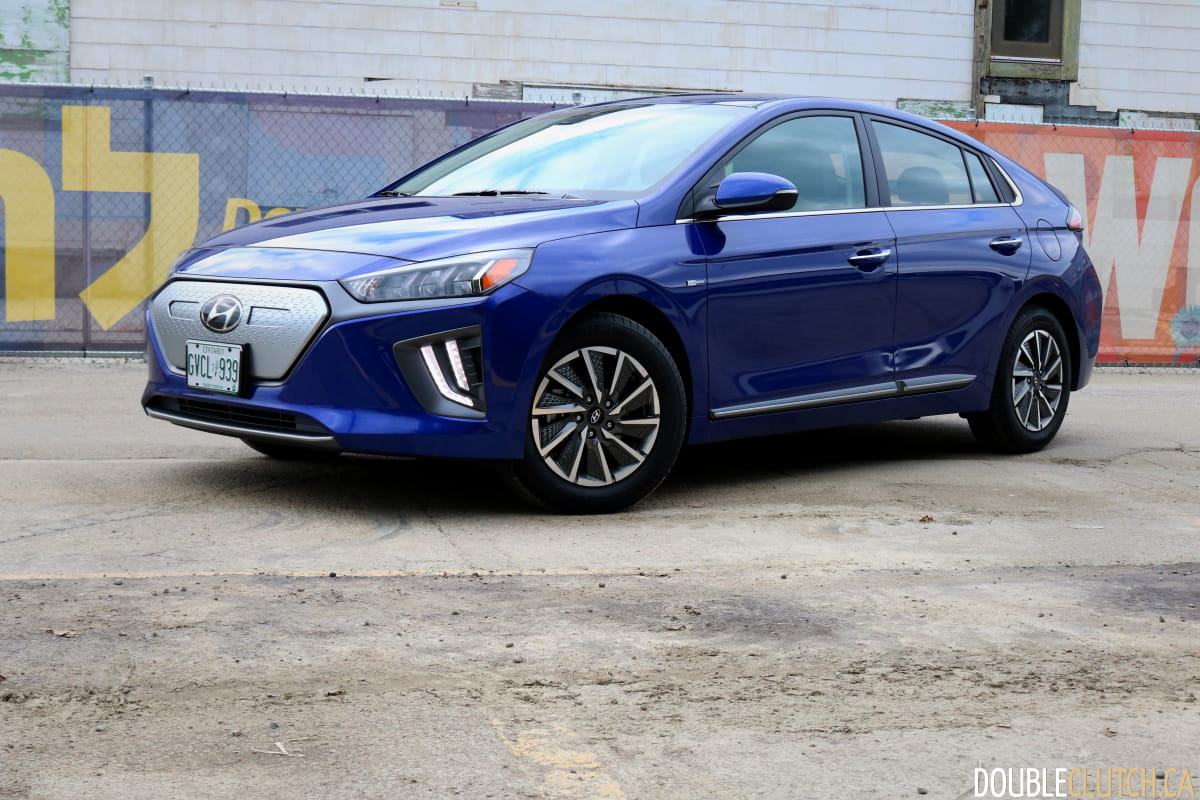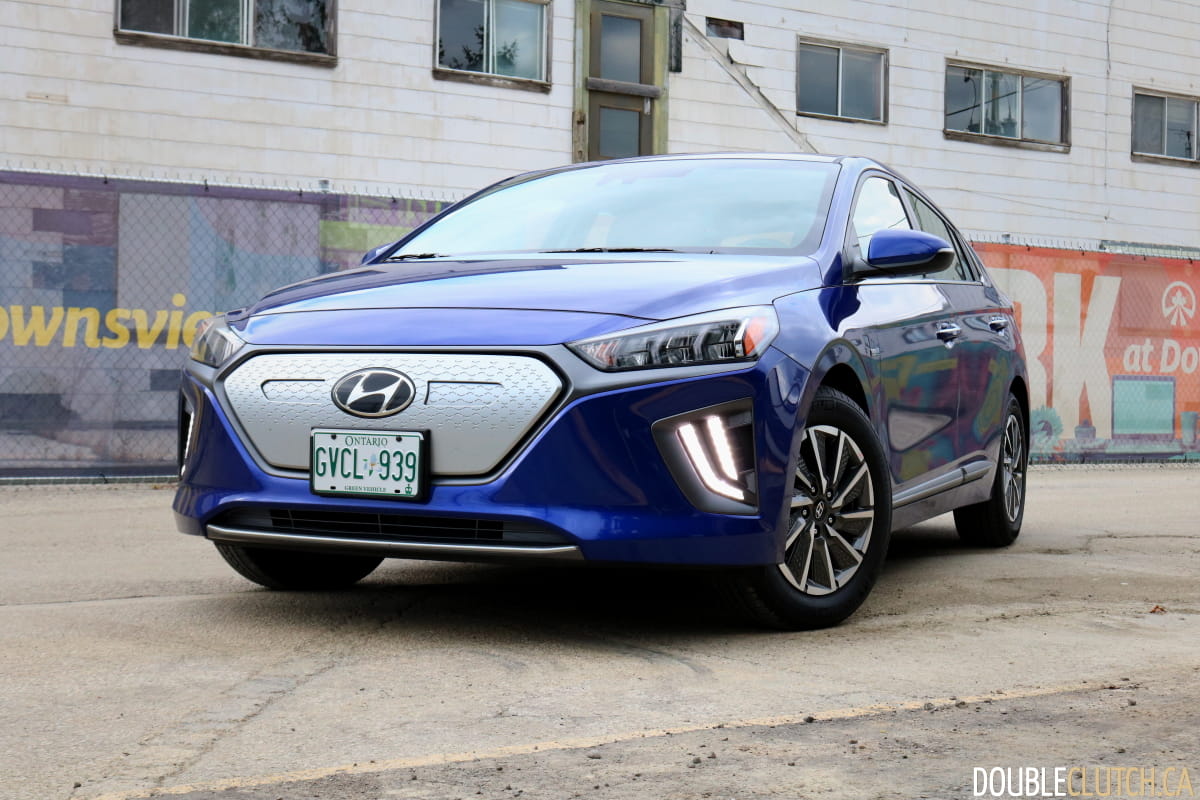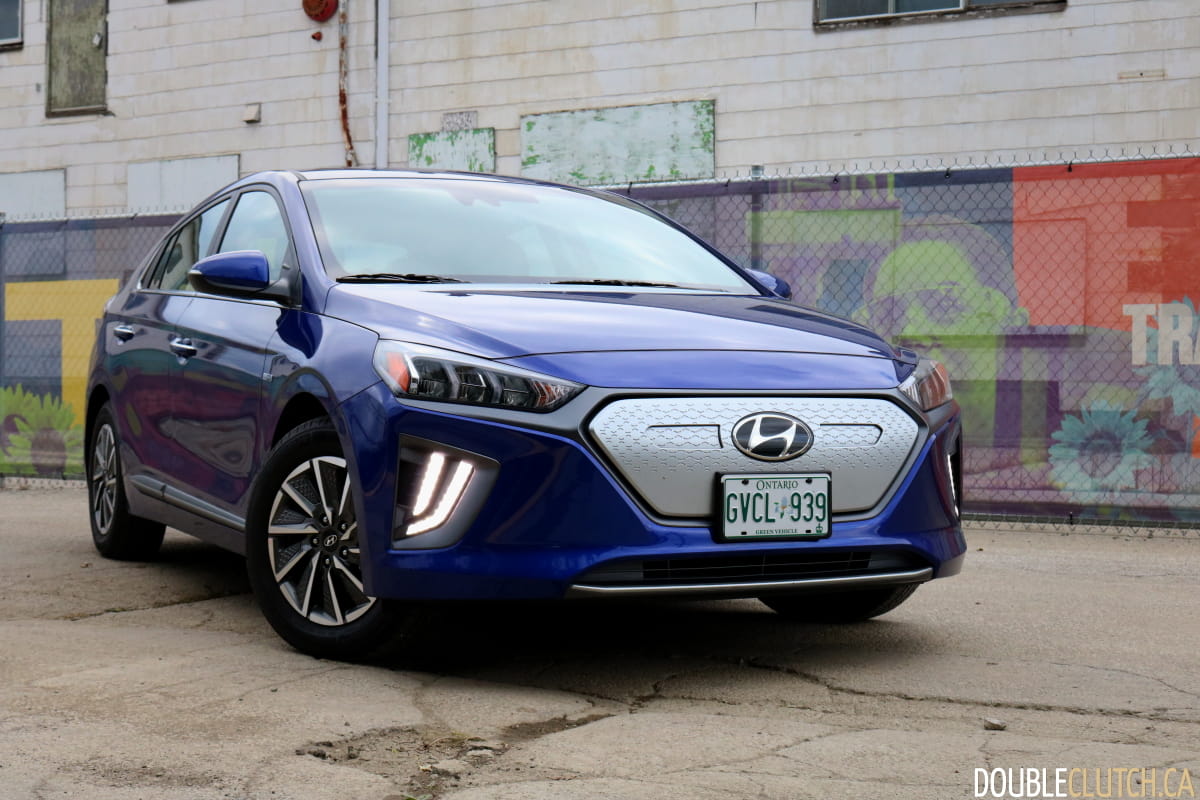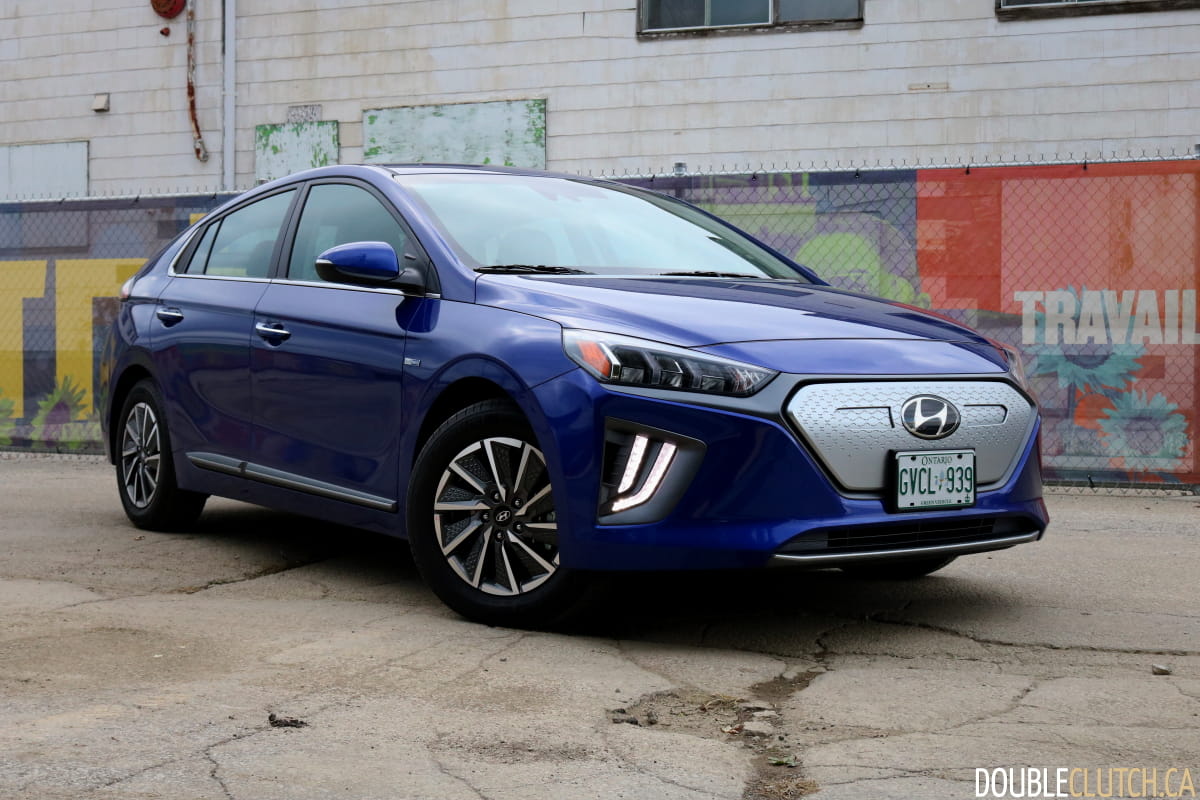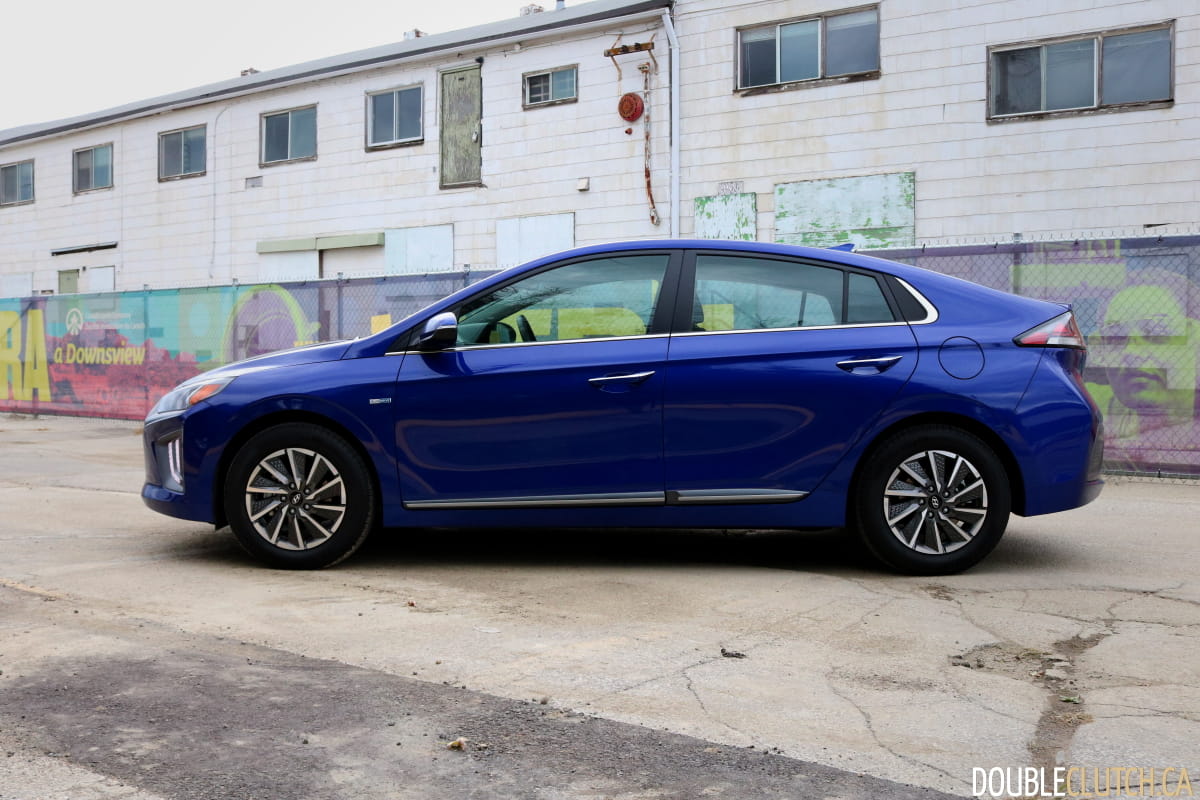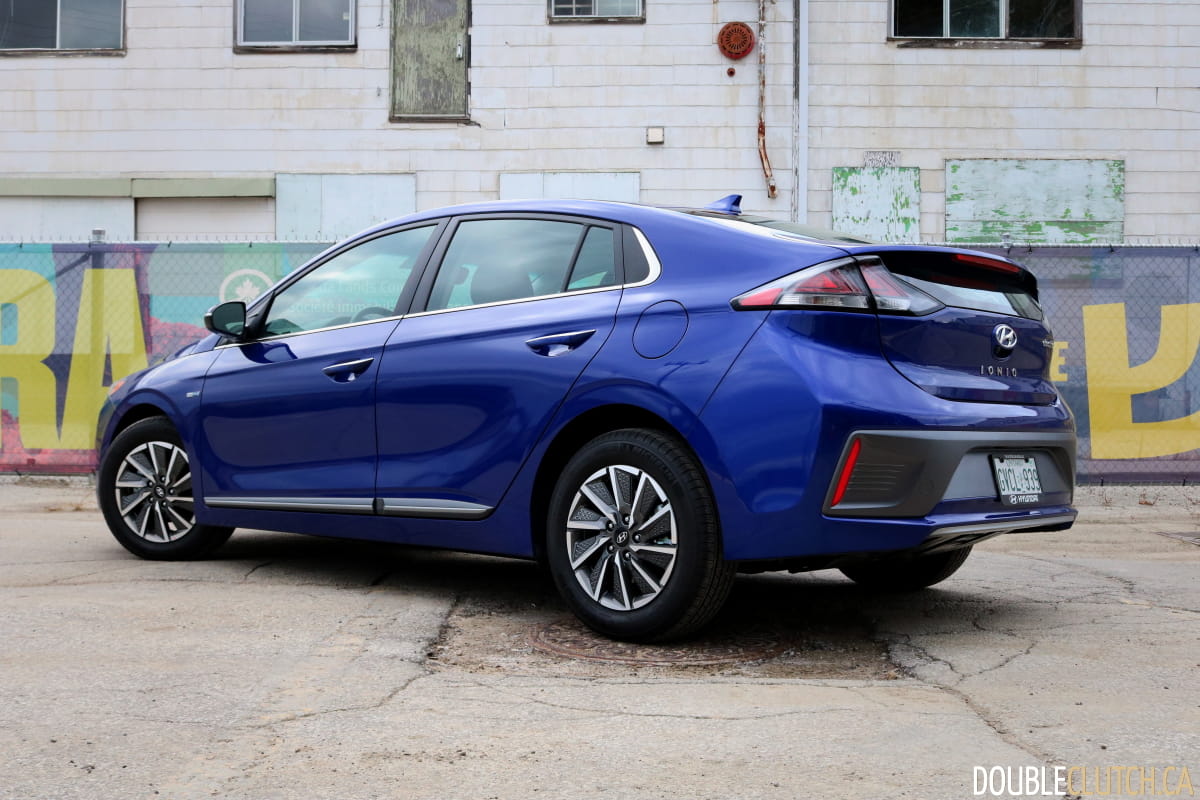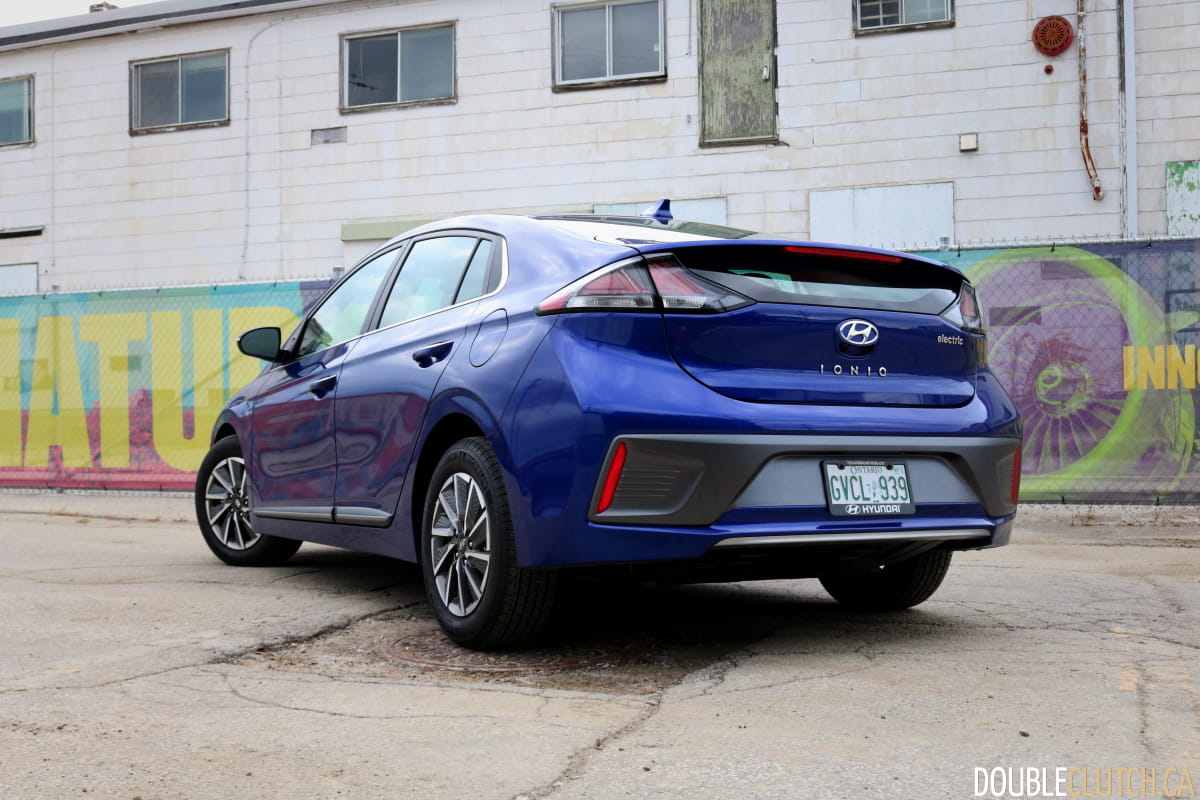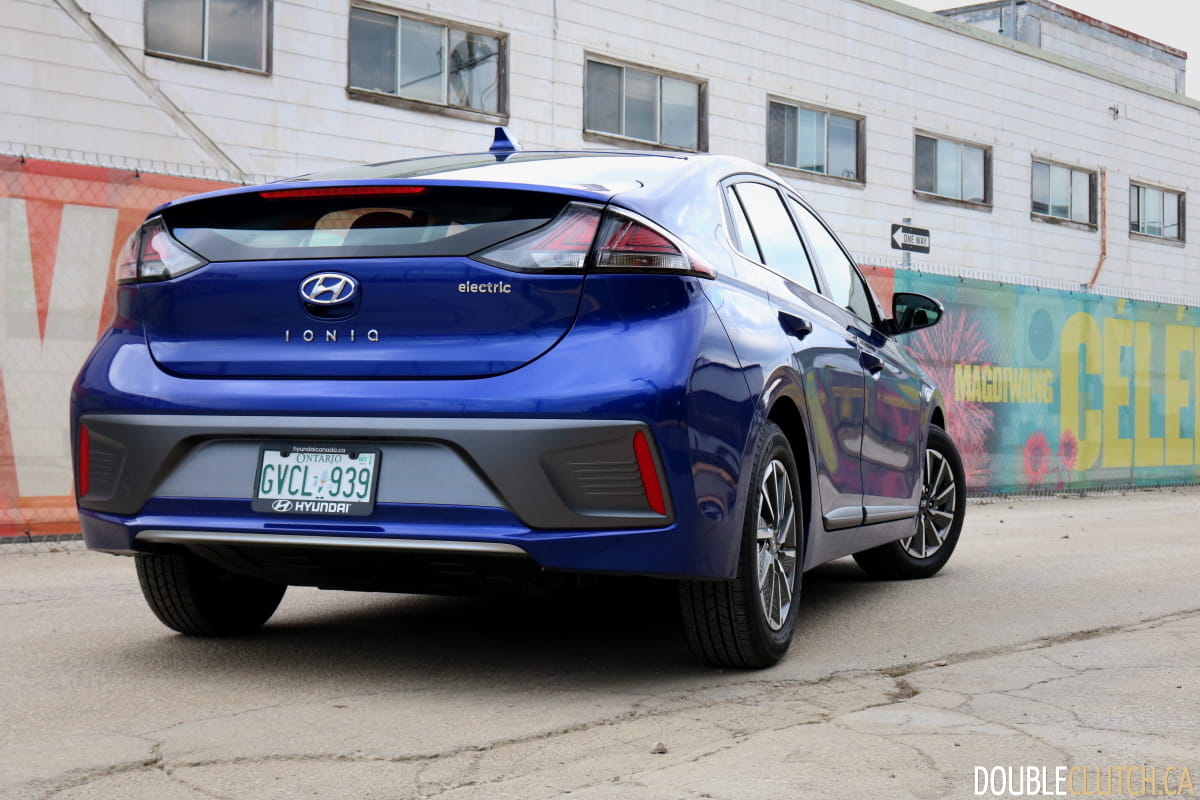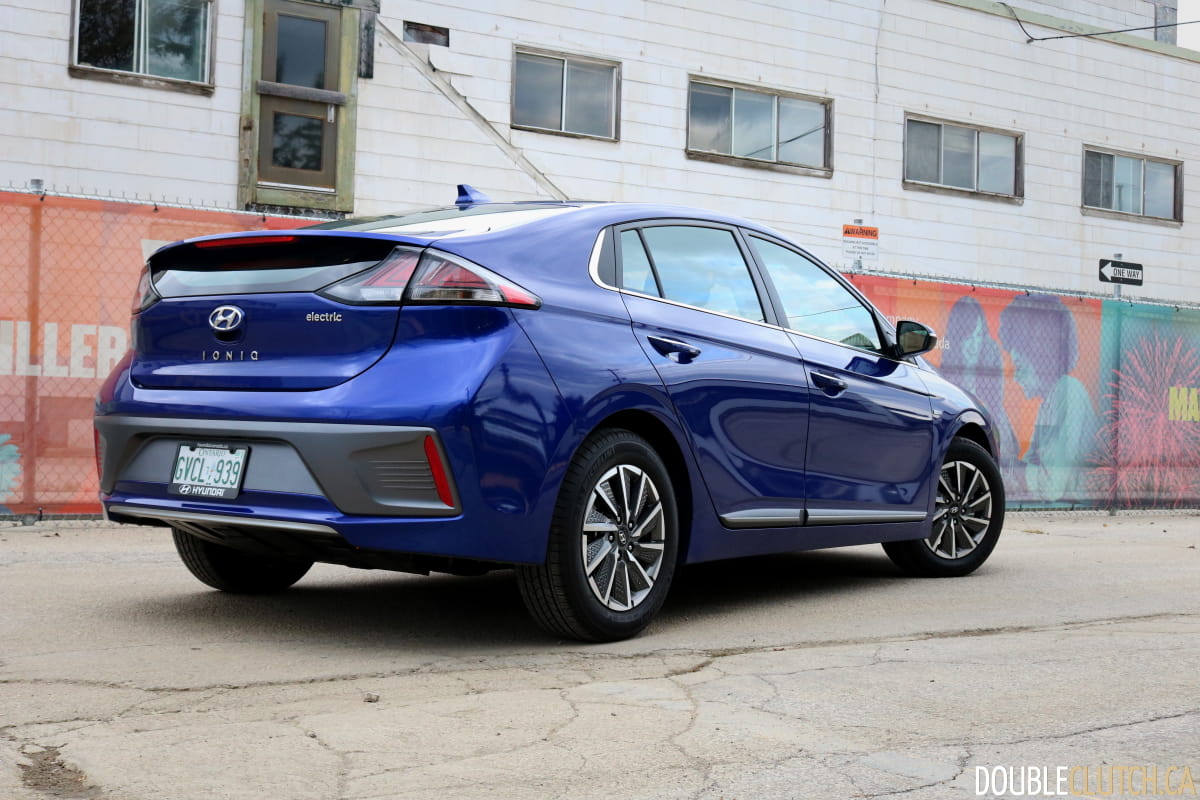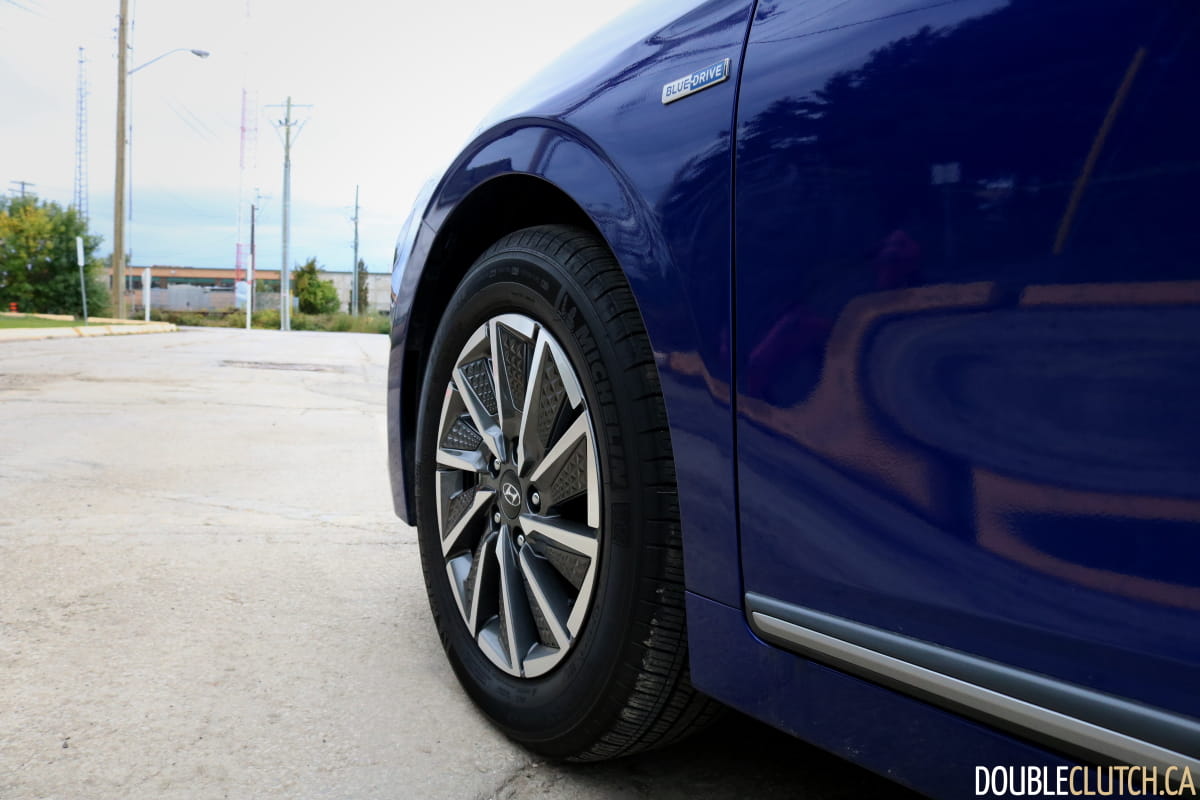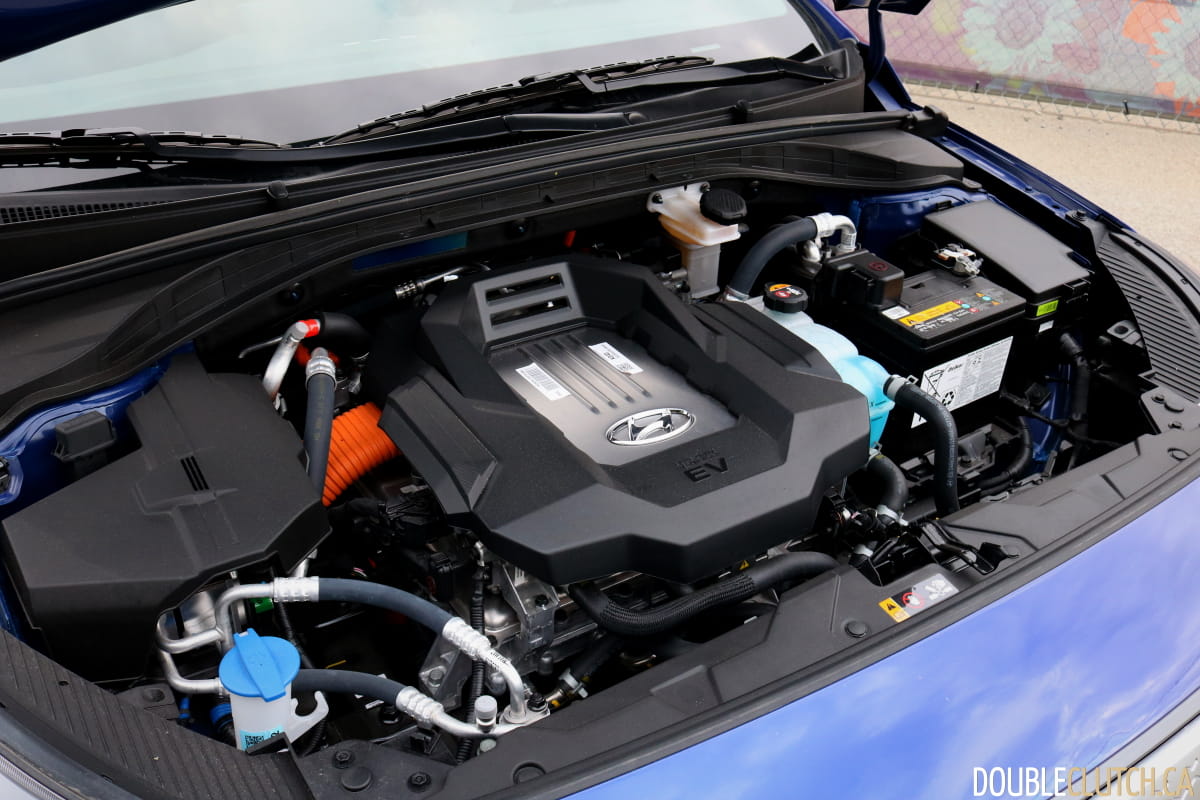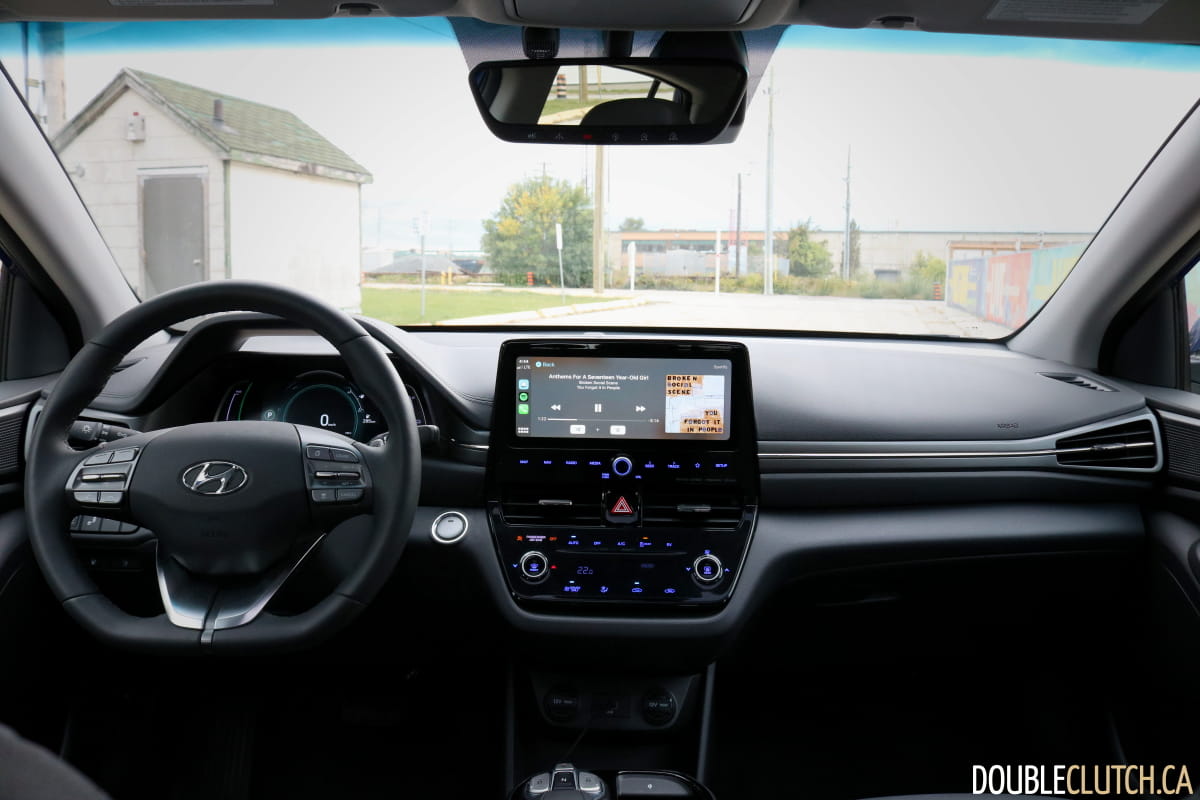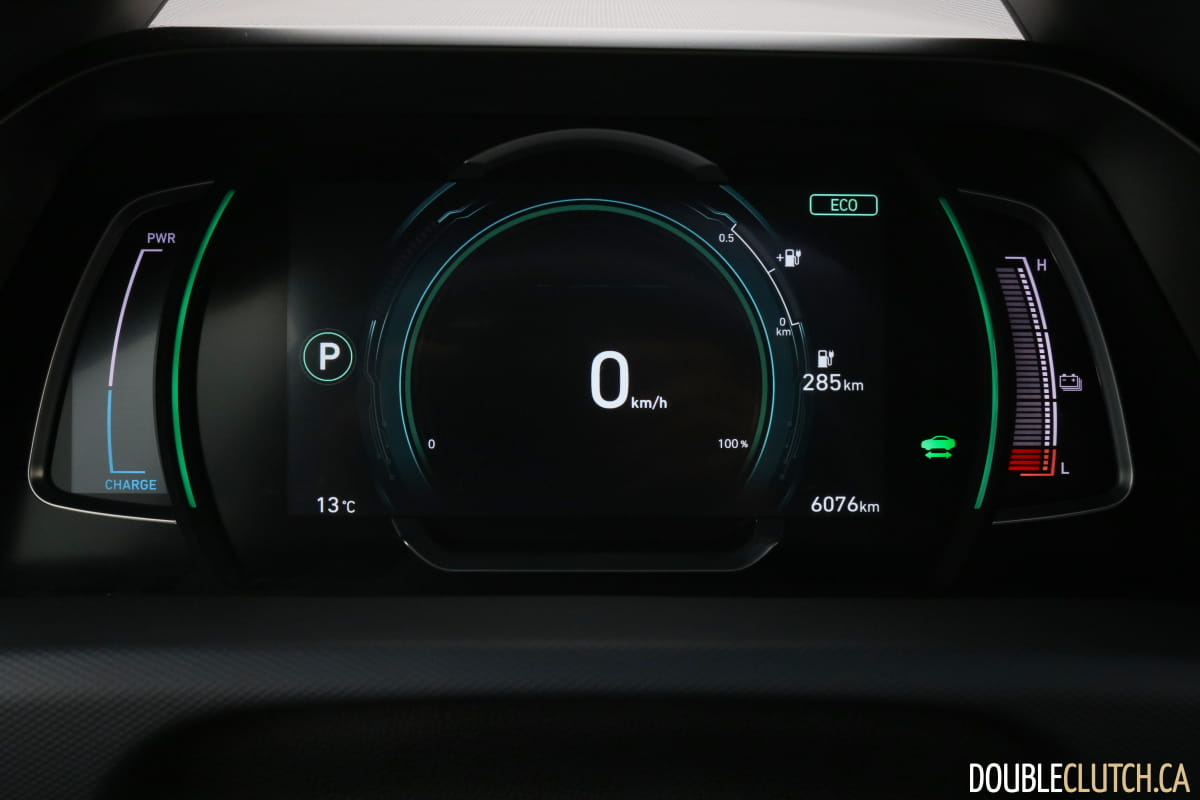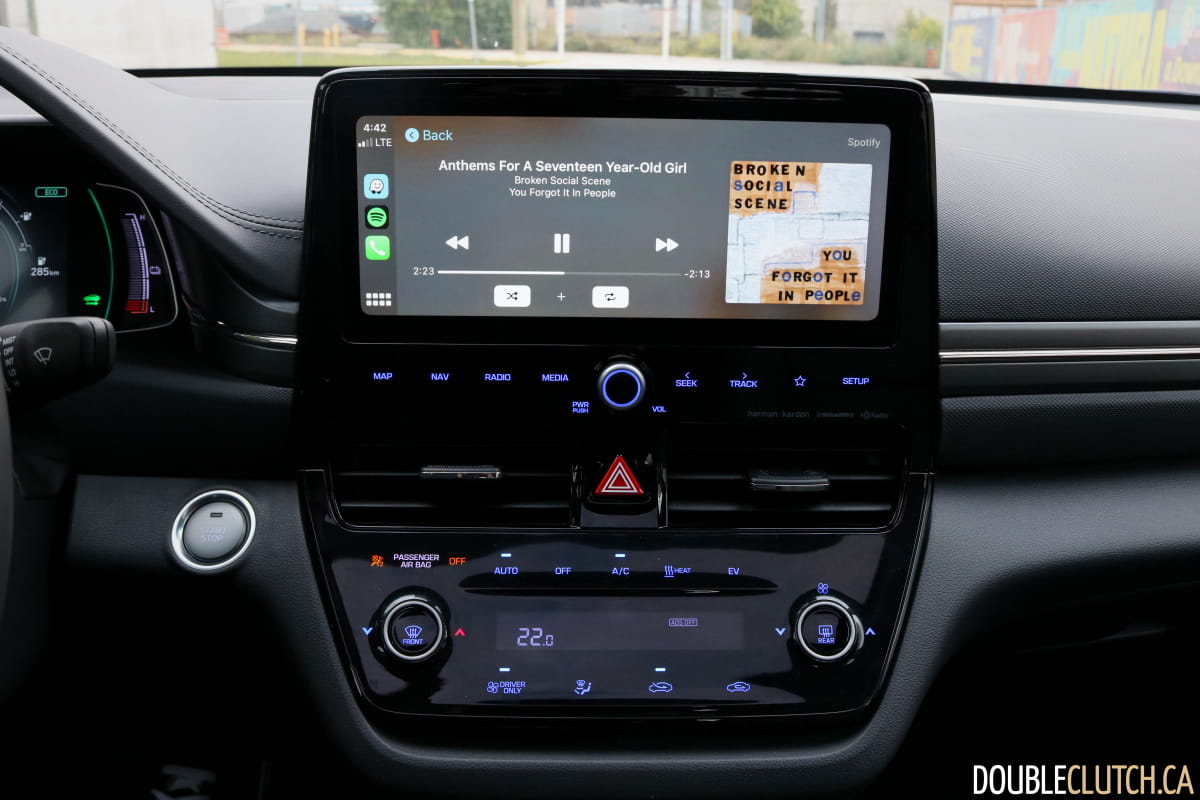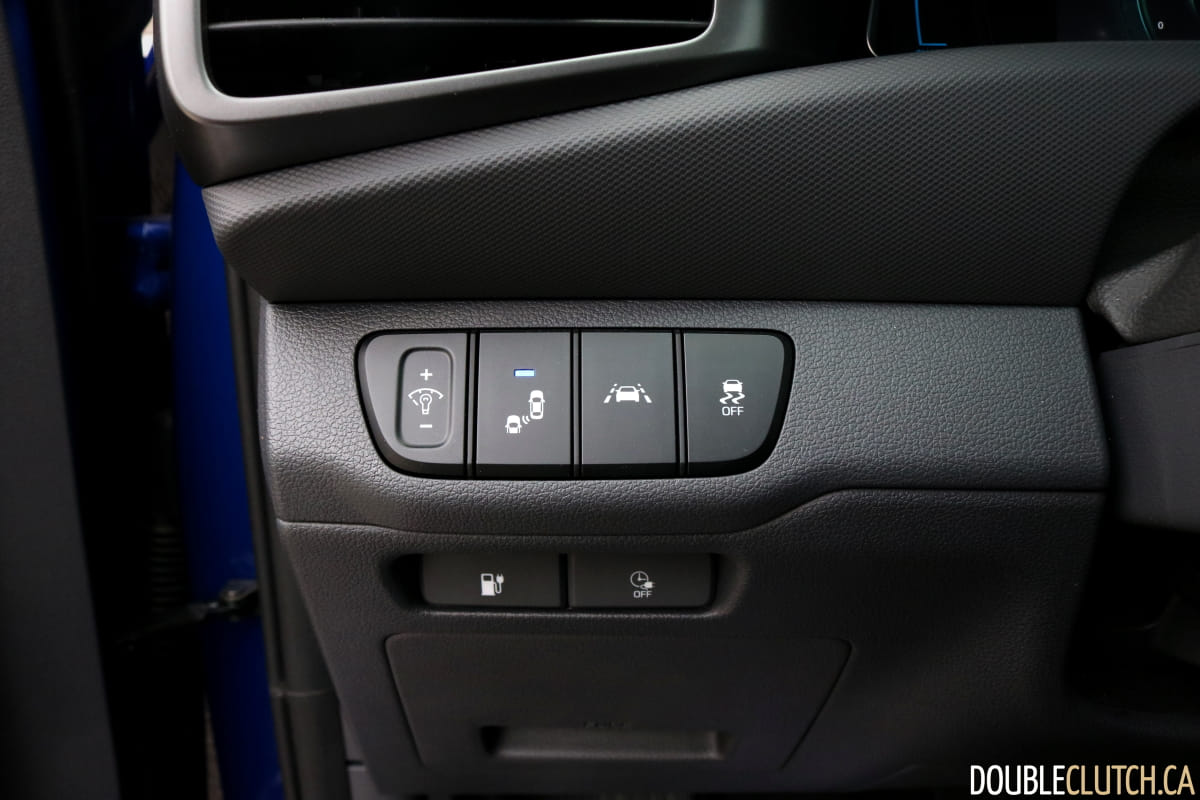The 2020 Hyundai IONIQ Electric is quite boring, which is actually quite interesting. Entry-level electric cars are often a bit of a novelty like laser beams and space cowboys, really playing up the sci-fi side of things. But sci-fi is very easy to do and it doesn’t always work so well at half-past four in the afternoon on the Don Valley Parkway. An electric vehicle as aggressively normal as Maroon 5 though? That should work everywhere at every time and it’s a really tricky thing to pull off. We tested an IONIQ for a week to find out how Hyundai has done it.
From the outside, the IONIQ EV is highly derivative. Take a second-generation Honda Insight, leave it in the dryer for a touch too long, control-c + control-v on the front facia from an Elantra GT, cant the trailing edge of the greenhouse forwards and Bob’s your uncle. It all comes together to create what is best described as a car, but that’s a good thing. When electric vehicles re-emerged in the early 2010s, many of them were styled as rolling monuments to virginity sporting novelty plasticine demeanors befitting cars that weren’t quite real cars. By contrast, the IONIQ’s styling is mature, conservative and inoffensive.
In fact the only sore spot of its styling is the nineteen hectares of chintzy silver plastic masquerading as a radiator grille. There’s a very good reason silver plastic was left in the 2000s: it makes everything look like a low-budget set piece from a Warped Tour electronicore band’s music video. Worse still, the silver plastic on the front of the IONIQ Electric hides what could have been a very distinctive styling element – a deployable moustache.
For additional heat management, the IONIQ Electric can open two mail slot-sized flaps, one on either side of the front emblem, vaguely reminiscent of a moustache. While the shiny plastic applique does a good job of hiding them, it’s ultimately a hopeless masquerade as it just isn’t necessary. Electric cars don’t need great big grilles and traditional combustion cars like the Fiat 850 Spider, Citroen SM and Renault 8 have all managed to look fantastic without gaping inlets up front.
With technology being such a centerpoint of electric vehicles, it’s disappointing to see flaws in the IONIQ’s in-cabin electronics. While the infotainment screen is big and quite crisp, it’s a long reach to the display, there is a fair amount of lag and many key functions are obfuscated via capacitive-touch controls that offer no haptic feedback. Another display oversight is the somewhat limited functionality of the digital gauge cluster. It doesn’t offer a static screen of what song is currently playing, an annoyance when the gargantuan infotainment screen is being taken up by Waze.
Thankfully, there’s lots to appreciate inside the IONIQ. There’s a deep, low-set tray in the centre console, material selection is rather nice aside from the black plastic for the centre stack and the seats are very comfortable and supportive. There’s also plenty of passenger and cargo room, although the latter is slightly diminished by the household charging cable’s carrying case. The Harman/Kardon stereo fitted to our Ultimate test car is very V-shaped and features quite a bit of distortion but it’s on par with most branded systems in entry-level EV competitors.
When it comes to putting rubber to tarmac, the IONIQ Electric goes about its business with little in the way of drama. Thrust is sufficient for everyday driving and the main culprit of wheelspin is the skinny little eco tires rather than the torque of the electric motor. That performance is more sprightly than expected with only 134 horsepower on tap and although the Ioniq sports 218 lb-ft., much of that is artificially restricted in an attempt to quell the torque steer often present in front-drive electric cars.
Overall range is improved for 2020 to a rated 274 kilometres, thanks to a revamped electric drive system. This number is neither game-changing nor terrible, although when the IONIQ Electric does need to be charged the charging point is on the wrong side of the car for left-hand-drive markets.
In addition to the mildly inconvenient charging port placement, another minor annoyance is the lack of a true one-pedal driving mode. When regenerative braking is set to max, the IONIQ does an admirable impression of a combustion-powered car with a lightweight flywheel, shedding speed and RPM at a purposeful rate. That is, until 20 km/h or so, when the computer gubbins decide that they can’t be bothered to slow the car anymore. While most drivers will be entirely pleased that the IONIQ can creep around like a torque-converter automatic, it would be nice to be able to have true one-pedal driving.
Turn the steering wheel, and the IONIQ Electric manages its mass well. Body control is quite good and lane-changes are dispatched with stability and haste. Pitch the IONIQ through an on-ramp and it remains tenacious on throttle with plenty of feedback from the tires, although not much in the way of steering feedback, as the limits of adhesion are approached. That being said, the steering does have rather good weight. When Hyundai initially switched to electric power steering with models like the 2011-2014 YF-generation Sonata, the steering was as limp as a week-old salad, so seeing such improvement is cause for celebration.
Relax a bit and it becomes apparent just how quiet the IONIQ is at highway speeds. The slippery exterior’s 0.25 drag coefficient helps it slice through the air and the lack of an engine coupled to use of sound deadening materials contribute to luxury car levels of quietness. In fact the loudest thing in the IONIQ is often the chime for the driver assistance suite. Lane-keep assistance works well even on city streets while the automatic emergency braking system has a fair threshold that’s unobtrusive for most drivers. The IONIQ Electric’s adaptive cruise control also works well with superior smoothness to most systems on the market.
The IONIQ Electric has managed to achieve an impressive level of normalcy. While it has some flaws that rear their heads in everyday operation, almost all of them are normal car flaws that don’t have anything to do specifically with electric operation. If spending much more than $40-45,000 is very unappealing, the IONIQ EV is a very good option. Loaded up, the Chevrolet Bolt, Nissan Leaf and Hyundai’s own Kona EV are all into the $50k range and while they are all better cars, they just can’t touch the IONIQ Electric’s sheer value.
It seems then, that the 2020 Hyundai IONIQ Electric is the true entry point into a modern EV. Make no mistake: the future is here, the future is now and the future is reassuringly just as regular as the present.







